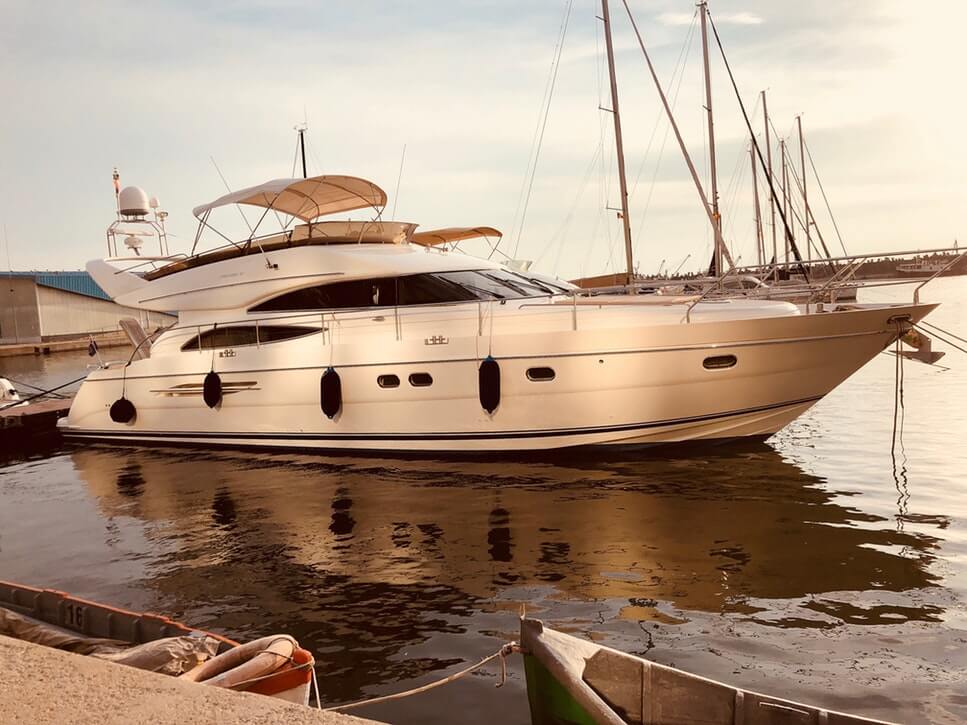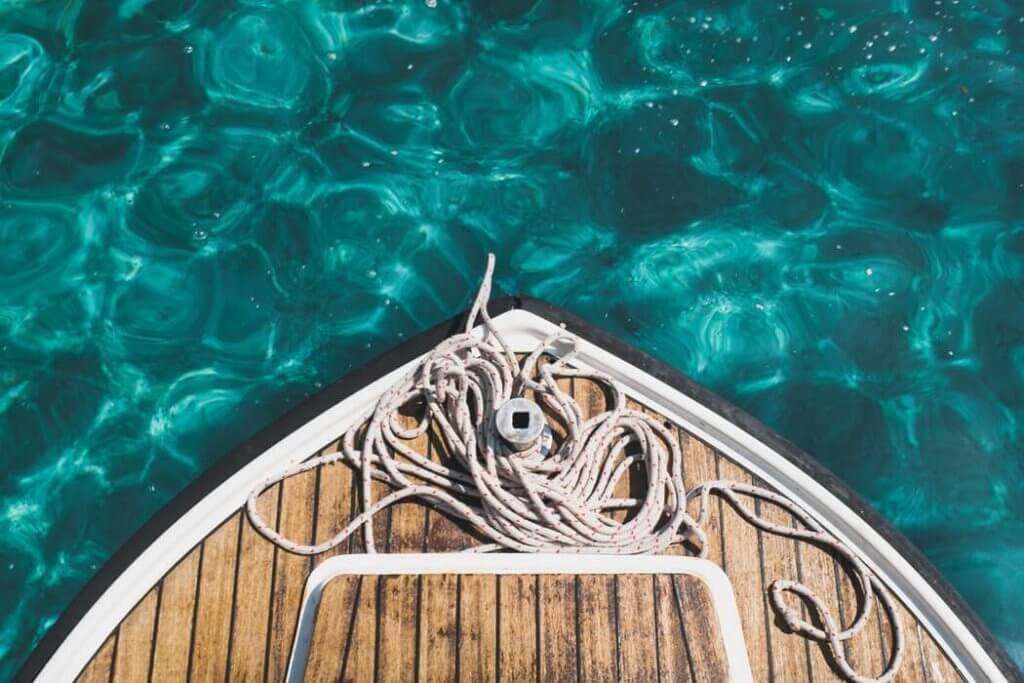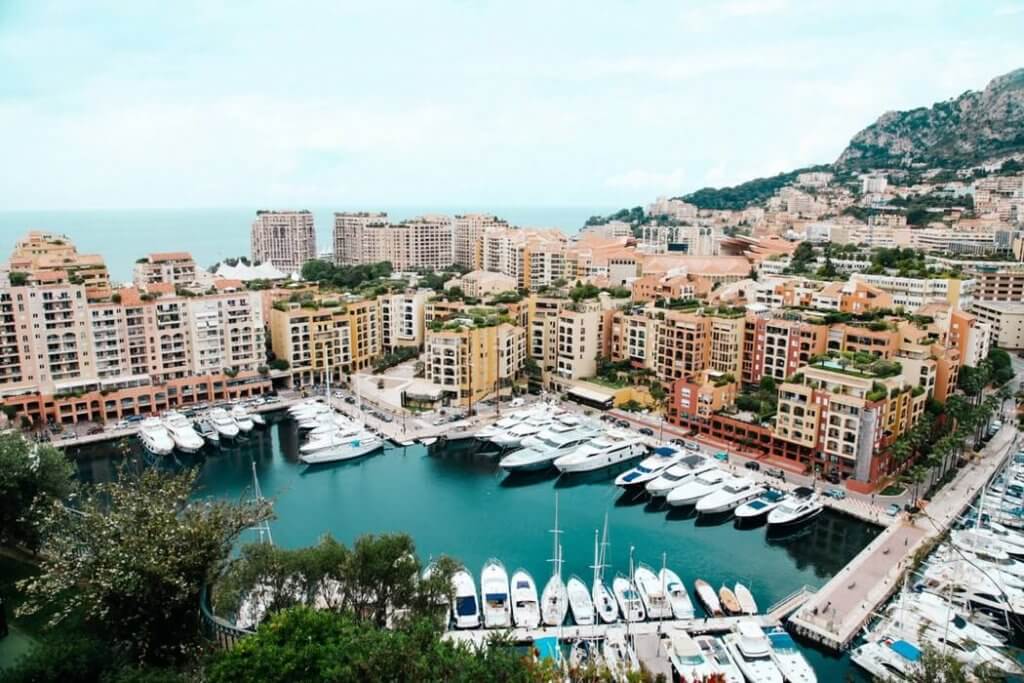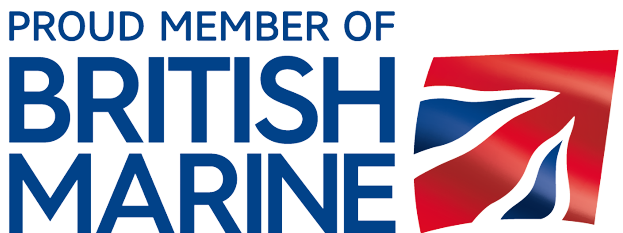Viewing a Boat For Sale

You are looking for your first, or your next boat. Let’s assume that you have narrowed your boat search down to a few boats that might be suitable. Now we get to the exciting bit. Viewing potential purchases. All you need to do now is view them, and then make a decision. Sounds easy? Sadly, no it’s not. This article is intended to give you a few hints to help you through this potential minefield so that you (eventually) get the right boat for you. Create the short-list The typical purchase process involves doing a boat search (something that Go Earth can assist with) by trawling through a variety of sources. Eventually, you may have a short-list. How many boats should be on your short-list? You may think that one or two are sufficient. After all, you have read the particulars carefully and may have spoken to the broker who assured you that the boat was excellent. The reality is that many of the boats simply turn out to be very unsuitable. What could go wrong? What should you look for? Possible issues to identify on the viewing You need to view each boat with open eyes. It’s the ‘head vs heart’ syndrome. Definitely do not set your heart on a boat before you have viewed it and thought about it. There are a few things that you can do to ensure that your viewings are not a waste of time. Take your camera with you and photograph all aspects of the boat. This is ideally a good digital SLR if you have one. Fit it with a wide-angle lens, so that you can see more in each photo. It is also handy to have a telephoto lens, so that you can take photos from different angles and distances. You should also take a good torch or use the flash on your mobile phone, and ideally bounce the flash off a white or pale surface. This will help you see the darker areas of the boat (such as in the engine bay), without sharp shadows hiding possibly important details. A mobile phone (in addition to your main camera) can be pushed into recesses that a full-size camera cannot reach. Keep a careful record of which photos belong to which boat. Make copious notes during the visit. The whole boat should be examined for obvious signs of damage or problems. For example, we viewed a boat for a client where the area where the mast went through the coach roof had a repair. (See the photos.) That by itself might not have been a cause for concern. However, the repair had been badly done and most importantly, the repair itself seemed to have cracked again, possibly suggesting continuing stress at that point. On further investigation, we noted a jagged line of gelcoat cracking along the starboard side of the coach roof. Again, there had been attempts to repair this. (See the further photos.) The point is that this investigation suggested the possibility of a major structural event at some time, such as a de-masting causing significant damage. We recommended that our client should not touch this boat with the proverbial bargepole. One issue that often worries people is ‘osmosis’. This is frankly very difficult to identify on your visit. Even the ‘worst case’ – stage 3 osmosis – will typically only show blisters below the waterline. If the boat is out of the water, then look along the line of the hull. Ideally with the sun in line with the bow-stern, so that it will cast shadows on any blisters. This is really a job for the surveyor. One useful tool to use when viewing a boat is your nose! If it smells damp and dank, that may be a warning sign. Of course, when you find potential issues, you need to decide how serious they really are. Some issues are simply what you must realistically expect on an older boat. Others are easily fixed. We viewed another boat for a client that looked like it had a coral reef growing off its hull (see the photo). In this case, it was simply that the owners had not used the boat and the antifouling had worn off. The boat itself was actually perfectly fine, with no issues with the hull, and no signs of osmosis. Once it had been cleaned off and anti-fouled, it looked almost like new. Crack near the mast Gelcoat cracking along the coach roof Continuing cracking with a poor repair Coral reef growing off a boat? Time-poor? How many on the short-list? Pre-view service? It is a truth universally acknowledged (with apologies to Jane Austen), that most boats you visit will be entirely unsuitable. We see a lot of boats on behalf of clients and we think that about 75% should be rejected; and of the remainder only about half of them will really hit the mark. In other words, as a rough rule of thumb, only about 1 in 8 will be really suitable. It follows that if you want to have a couple of real possible candidates to choose from, you need to have, on average, some 16 boats on this initial ‘short’ list. (Feel free to check the maths!). If you have the time, like visiting boats, and have the expertise to identify issues on a first visit, then this is not really a problem for you. On the other hand, if you are ‘time-poor’, are better spending your time running your business or career, don’t like travelling far and wide, or wish to reduce the risk of missing issues with a boat, then you might want to consider using an agent to do pre-viewing. We (Go Earth) provide a ‘pre-view’ service where we will visit a number of boats on your behalf, and provide a report with many photos so that you only need to visit boats that are at least potentially viable. This service is available in the UK and globally.
Deciding What You Want From Your Boat

Deciding what you want from your boat One of the challenges when buying a boat, especially if it is your first boat, is deciding what you want. At Go Earth, we call this process “Requirement Analysis” – a term unceremoniously nicked from project management and software development. Breadth of choice So – you know that you want to buy a boat – but what sort of boat? There are more varieties of boat than, say cars. This means that – if you are to make best use of your money and get a boat that you will enjoy for a long period – you need to give it some thought. Let’s look at some of the variety of choices you need to make. All cars, for example, have 4 wheels – unless you are Del Boy! (And for the younger readers, do a Google search on ‘Del Boy car’!!). Boats on the other hand can have one, 2, 3 or even more hulls. In fact some racing yachts hardly use their hulls, as they are on foils. What about motive power? In cars, the choice is between petrol, diesel and electric. However, they are all broadly similar in that their output is rotary power – turning wheels. The differences between the main ‘power units’ on a power boat (engines) and on a sailing yacht (sails) could not be more stark. What about Price range? Again, the differences are massive. No matter how hard you try, it is really very di ffi cult to spend more than (to take an extreme) £2 million on a car. It’s dead easy to do this for a boat. Trade-offs The main trade-offs to consider when purchasing a boat of any type are: Size Age Price Subsidiary trade-offs are Condition, including service history Brand Other factors, such as the inventory seem to pay only a very minor part. Sometimes, great electronics or the availability of a dinghy and engine may be a minor factor. As a purchaser, you need to decide on the relevant importance to you of these factors. Age matters In respect of these trade-offs, boat are similar to cars. The older the car, the cheaper it usually is. There are exceptions – some classic cars (what we used to call ‘old bangers’!) may appreciate in value. However, the general rule still applies – there is a depreciation curve showing how price falls at the boat gets older. At Go Earth we have records of asking, and sold, prices for many models; so let’s take one random example, the asking prices for a Fairline Targa 48. We did an analysis of average asking prices for this model, and this is what we found. Illustrative Prices – Fairline Targa 48 In the table, the first column is the year, the second is the asking price, and the third is the annual depreciation compared with a model a year younger. These prices may be only approximately typical, but they illustrate that (as with cars) the newer the boat the larger the depreciation hit. We find that once you get to the older boats, and if you buy wisely (using Go Earth’s negotiation services!), you can suffer zero depreciation for several years. Size matters There is, however, one big difference between cars and boats. Cars are all very broadly the same size. Even the largest SUV is probably only twice the size of the smallest micro car. The size difference in boats is immense. This leads to a major impact on price. As a very approximate rule-of-thumb, the price of a boat increases as the cube of its length (as a boat increase its size in all 3 dimensions). So, a boat that is twice the length of an other one, could be 8 times the cost. Given that all boats shrink when you put them in the water (yes, I know that does not literally happen – I just mean that a boat on hard-standing always looks bigger than when it is in the water), deciding on the size of boat is a very important part of the decision making around defining your requirements. Flybridge or Sports Cruiser? Let’s take just one specific example of the sort of decision you need to make. Suppose that you are in the market for, say, a power 38 to 42-footer. Two of the main styles of boat are flybridges and sports cruisers. Which suits you best? If you are going to do this comparison, it may be helpful to know the typical main characteristics of each type. This is a summary: Flybridge Depending on the brand, there may be a limited range of models. By having a flybridge, this usually gives you more overall deck space, as you have a deck on top. Easier to manoeuvre in a marina, as you can see mostly around you from the flybridge. Two helm positions. Arguably, more traditional looking. Need to cover the flybridge with a tonneau cover in inclement weather. Flybridge is a nice space to entertain in good weather. However, the steps up to the fl ybridge can be steep, though. Better view of the scenery and surroundings from the flybridge. Slightly more susceptible to side wind, owing to higher windage. Can make berthing the boat slightly trickier in open marinas with high wind Slightly more susceptible to side wind, owing to higher windage. Can make berthing the boat slightly trickier in open marinas with high wind Cruising in warm weather from the flybridge is very pleasant. At larger sizes, flybridges tend to be the most popular choices. Higher – therefore bridge clearance can be an issue, primarily in inland waterways. More expensive per foot length, owing to an extra deck (i.e. the flybridge); but possibly cheaper per square metre of deck space. Flybridges tend to have better galleys. Sports Cruiser Possibly a more extensive choice. Less deck space. Fixed point to steer from – possibly limited visibility at some angles. One helm position. Sleeker,
An Interview with Boat Trader

The leisure marine industry has many different companies in many sectors selling a wide variety of goods and services to boaters and potential boaters. In this special interview, we talk to Boat Trader and explain why ‘Go Earth does it differently’. Something different Boat Trader: Martin, can you tell us a bit about why you started Go Earth Martin: There are two main elements to this; a link with the water and wanting to do something different – some ‘thinking outside the box’ – if you will forgive the cliché! Firstly, we have had a link to the water in one form or another for many years. We been boaters ourselves for over two decades, and I have been a scuba diver for four decades. Our daughter and son-in-law are both qualified PADI scuba diver instructors. I am also a dinghy sailor – or at least attempting to be! So, we got to know the vast variety of companies in the broad leisure marine industry. Next we decided to form a company – with something to do with boating. Initially we were not sure what exactly was wanted. One thing we were sure of – we did not want to do the same as everybody else. In a nutshell, we wanted to do something different that would ‘add value’ to the boating community. Boat Trader: What do you mean by ‘something different’? The art, craft and science of boat buying Martin: Frankly, at first we were not sure. So, we indulged in (cliché alert!!) some out of the box, blue-sky thinking. (Well, I did warn you about the clichés!) What we eventually realised was that we needed to do things that were of genuine value to boaters, which were not currently being done, and which we could deliver successfully. We did not want to be just another chandlery or another boat sales company or another training school. One thing that we kept on hearing was of people who were not quite sure what they wanted when they were buying a boat and how to go through the whole process. Brokers help, of course. However, they have to act for the seller, not the buyer. Therefore, a key element of our business is helping people with buying a boat, acting on behalf of the buyer, not the seller. Boat Trader: How do you do this? Martin: By becoming experts in boat buying. The concept is simple enough. Most people only buy one, two or three boats in their lifetime. They simply do not do it often enough to know all the things that should be considered when buying a boat. We go through the process time and time again with multiple clients, multiple brokers and multiple types of boats. As a company, we aim to be the expert ‘port of call’ (another cliché ?) for boat buyers. Requirements analysis Boat Trader: Is that all there is to it? Martin: No, not quite! As well as expertise, you need processes, tools and data to support the activity. As an example of a process, for our boat search, we typically spend some time with the client developing a ‘Requirements Analysis’. We talk to the client, find out what they are looking for, offer advice, and iteratively develop and improve the requirements analysis. This does require a bit of time and work up front; but – very importantly – it helps ensure that the client ends up with a boat that really does suit them and their needs. Note that this is the polar opposite of ‘Oh –I have just seen a nice boat – let’s buy it’. We start with the client, not the boat! Boat Trader: So the first step is the requirements analysis. What do you mean by iteratively? Martin: Sometimes, the client is not quite sure what they want. So – in our enhanced service – we might for example develop a requirements analysis, then do a boat search. After getting our written report, the client will think about it, might develop their thinking further, and might realise that they need something slightly different, or simply change their mind about some aspects of their requirements, or have a change in the budget they are willing to spend. We then (at absolutely no extra charge) change the requirements analysis and re-run the search for them. Boat Trader: What if they change their mind again? Martin: No problem. With the enhanced search, we will run the requirements analysis / boat search a third time, again at absolutely no extra charge. The important thing for us is that the client should not be locked into their initial thoughts. We want them to end up with a boat that really does suit their needs. Software tools Boat Trader: Earlier on, you mentioned that you used some ‘tools’ in your work. Martin: One of the tools that we use is some software that we developed in house. It holds an enormous database of brokers and others – UK and global – covering a vast range of budgets, boat types, locations and so on. During a boat search, we can input some key parameters from the requirements analysis and use that to query the database to identify the brokers that are likely to have boats that match the requirements. This database also includes, for example, user forums that sell boats, brokers who don’t advertise on the internet, some private sources, some not-so-well-known auction sites and so on. If you are searching for a superyacht, then you clearly need to focus on those brokers, not ones selling, say, narrowboats or river boats. The software helps us to this effectively and efficiently. Data Boat Trader: What about the ‘data’ bit? Martin: Easy – We accumulate masses of data inside our software. We use that
Getting Started in Boating

Dipping your toe in the water Never been boating before? Thinking of buying a boat? But not sure if it is for you? In that case, we have two useful suggestions to help you get started: Try an on-board experience for a short period Get independent, professional advice on what sort of boat would best suit you Try before you buy – onboard experiences There are numerous options you can try at a relatively modest cost. Go Earth offers the following ‘on-boat experiences’. The lowest cost is simply to stay on a 34 foot sports cruiser that we have moored in a beautiful part of north Wales. The boat will sleep up to 4 people in 2 cabins, each with a comfortable double bed. In effect you are using the boat as a small apartment and can stay from 2 days upwards and use it as a base for a different type of holiday experience. Note that driving the boat is not included in this package. At a slightly higher cost a 43 flybridge sports cruiser is available, with a skippered short trip up a beautiful part of the Thames is available. Again you can stay on the boat for 2 or more nights; with plenty of space for up to 4 people to stay overnight. Moving up the cost scale, but still reasonably economical, we offer a great charter in a power catamaran from the south of France – Cannes or St Tropez. This has 4 cabins, sleeping up to 8 people; and a skipper is included. In this option, the skipper stays with you all the time. The skipper knows the area very well, and can take you to some really great restaurants around the Nice/ Cannes / St Tropez area. This option is certainly much cheaper than many other commercial charters. We can also offer a bespoke service – if you discuss your requirements with us, we can design a cost-effective package to suit you. Any of the above will give you a real – and a pleasant – experience, and provide a strong foundation for ‘next steps’ . At a minimum you should have a nice short break – so think of it as a holiday. Introductory training If you want to regard this as a real learning exercise, and if your current knowledge of boating is limited, each of the above can be combined with our day’s course – Introduction to Boating. This is a combination we really recommend if you are new to boating. It is a good and sensible investment of your time and money to ensure that you make the best decisions and help you avoid any expensive mistakes. If your ‘crew’ (such as a partner) is also new, then maybe this is a great opportunity for both of you to discover boating, so this becomes a shared experience.Of course, if you are really new to boating, you will not be ready yet (or safe enough) to take a boat out by yourself. So, following one of the on-board experiences, you should take one of the many training courses available. Go Earth, as part of its course, can provide you with a training plan to ensure that you get the required level of future training. Refining your thinking The advantage of getting some actual experience on a boat is that it helps you think about all sorts of things that you might not have considered before. Below is a small random selection illustrating the sorts of things you might need to think about. Beds. Yes, beds. If you are going to stay on a boat overnight or longer, does the cabin layout and the bed suit you? For example:- Do you want to be able to get out of the bed either side? The smaller boats may have one side of the bed against the bow or a bulkhead, so the person sleeping that side has to climb over the other if, for example, they want to go to the loo in the middle of the night. Do you read in bed at night? If so, is there enough space above the bed for you to sit up in bed. In cabins in the bow, on smaller boats, there might not be enough room to sit up. On the smaller aft cabin boats, the cabin may be spacious, but the headroom above the bed may be limited. Check this before you buy. Friends staying? If you plan to have friends staying, you may want cabins that provide a degree of privacy. Do all the cabins have doors? On smaller sports boats, there may only be a curtain. Some smaller sports cruisers have the mattress on the floor (aka deck!). Not a problem at all if you are fairly agile; but it could be an issue if you are not. Ease of crewing. On motor boats, the main activities you may need the crew (such as your partner) to perform are putting the fenders out, and getting them back in. For this you need at least one good side deck or (on smaller sports boats) an easy to climb through opening front window. Check this out before you buy. Also, you ideally want somewhere to easily store the fenders – or at least somewhere to mount fender baskets that you may want to buy. There are many, many other practical things that you will learn about boating by having these on-board experiences coupled with suitable training. Go Earth will help you all along the way. Getting advice We recommend getting advice from a variety of sources. However, at Go Earth, we are the only professional and independent company dedicated to providing professional advisory and procurement advice to the boat buyer. A chat with us is free of cost, hassle or commitment.
